Chapter goals
- Being able to name different aquatic invertebrates.
- Being able to explain how different aquatic invertebrates are adapted to life in the water.
The individuals of a species often look alike: they have a similar colouring and structure. For example, the small tortoiseshell species of butterfly (Aglais urticae) is easy to distinguish from the common brimstone species of butterfly (Gonepteryx rhamni). The individuals of a species can recognise each other and reproduce with one another.
A group of animals consists of multiple related species. For example, there are millions of insect species in the world. When classifying animals into groups, smaller groups can be linked together to form larger groups. For example, the common housefly belongs to the class of insects along with beetles, dragonflies, and other similar organisms.
Each species belongs to these kinds of groups. For example, the common housefly is:
Invertebrates are animals that have no internal supporting structure or skeleton.
Invertebrates do not possess well-developed senses. Their circulatory and respiratory systems are inefficient. These factors explain why invertebrates are often quite small.
Water ecosystems are home to many invertebrate species. In addition to the very small zooplankton, many larger invertebrates are also found in water ecosystems. Many water-dwelling invertebrates, such as snails, crabs, and clams have hard shells.
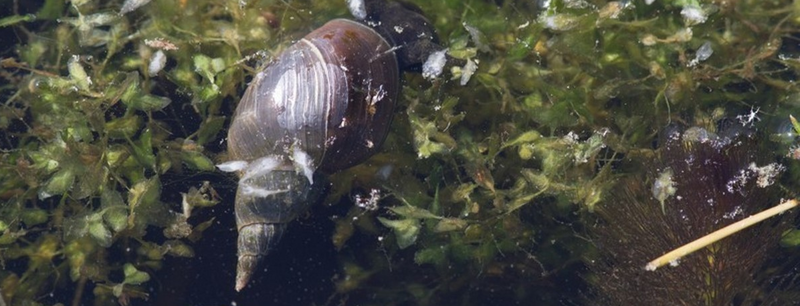
Species of crustaceans, molluscs, and worms are common in water ecosystems. In addition to these, insects and spiders can also be found living in the water. Many insects live in the water during their larval stage, but for some species water ecosystems are an important habitat also in maturity.
Most small invertebrates live on the water's surface. Pond skaters and whirligig beetles are examples of such species. Other invertebrates live under the water's surface, where algae and aquatic plants give them protection from predators. Clams, molluscs, and crabs dwell on the bottom of water ecosystems. Jellyfish also belong to the group of invertebrates.
When you dive underwater, you must hold your breath. This makes it hard for humans to stay underwater for long periods of time. If oxygen is scarce underwater, why can such a large number of species thrive in water ecosystems? How do these animals get their oxygen?
Many water-dwelling animals have gills. Gills are respiratory organs that filter oxygen from water and remove carbon dioxide from the organism.
The gills of crustaceans and insects are located in the back of the animal's body. Many worm-like organisms gather oxygen directly through their skin. Clams actively pump water in and out of their shells.
Some insects, such as water beetles, have no gills. As a result, they must occasionally come up to the surface to breathe in oxygen from the atmosphere with their breathing tubes.
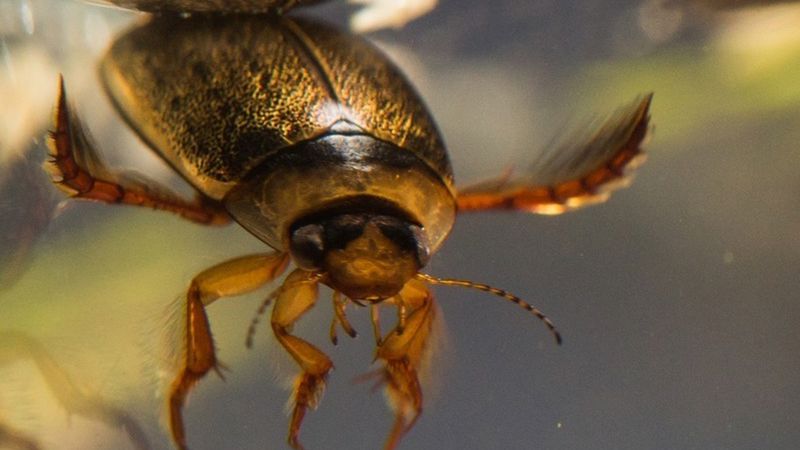
Some insects lay eggs in the water. The larvae of these kinds of species develop in water ecosystems. The insects that do so are called water insects. Mosquitoes and dragonflies are water insects, as their eggs and larvae develop in water.
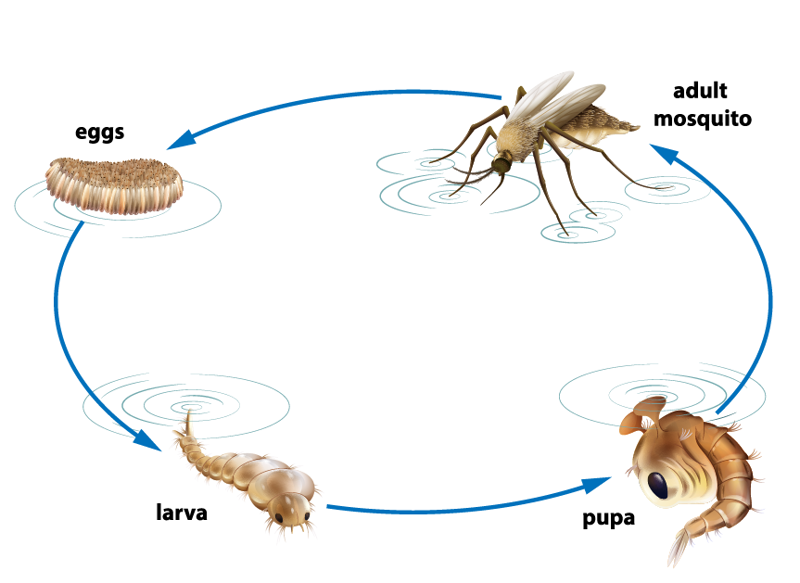
The development from an egg into a mature insect is an example of metamorphosis. There are two main types of this process.
A mosquito hatches from an egg and develops underwater as a larva. Finally, the larva encases itself in a structure called a pupa. The pupa hatches into an adult mosquito that is once again capable of flying and laying eggs. This kind of process is called a complete metamorphosis. In the image gallery below, the complete metamorphosis of a mosquito is explained in pictures.
Like a mosquito, a dragonfly larva is hatched from an egg. The dragonfly larva grows under the water before climbing a plant stem to the surface. When the larva is above the surface, it hatches into an adult dragonfly. This process is called an incomplete metamorphosis.
An incomplete metamorphosis differs from a complete metamorphosis in that it lacks a pupal stage.
In the image gallery below, the complete metamorphosis of a mosquito and the incomplete metamorphosis of a dragonfly are explained in pictures.
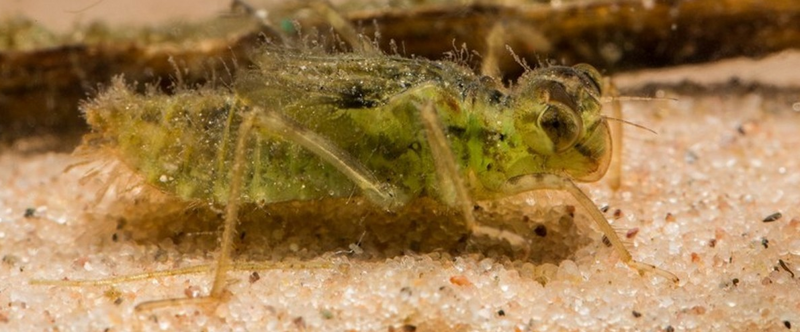
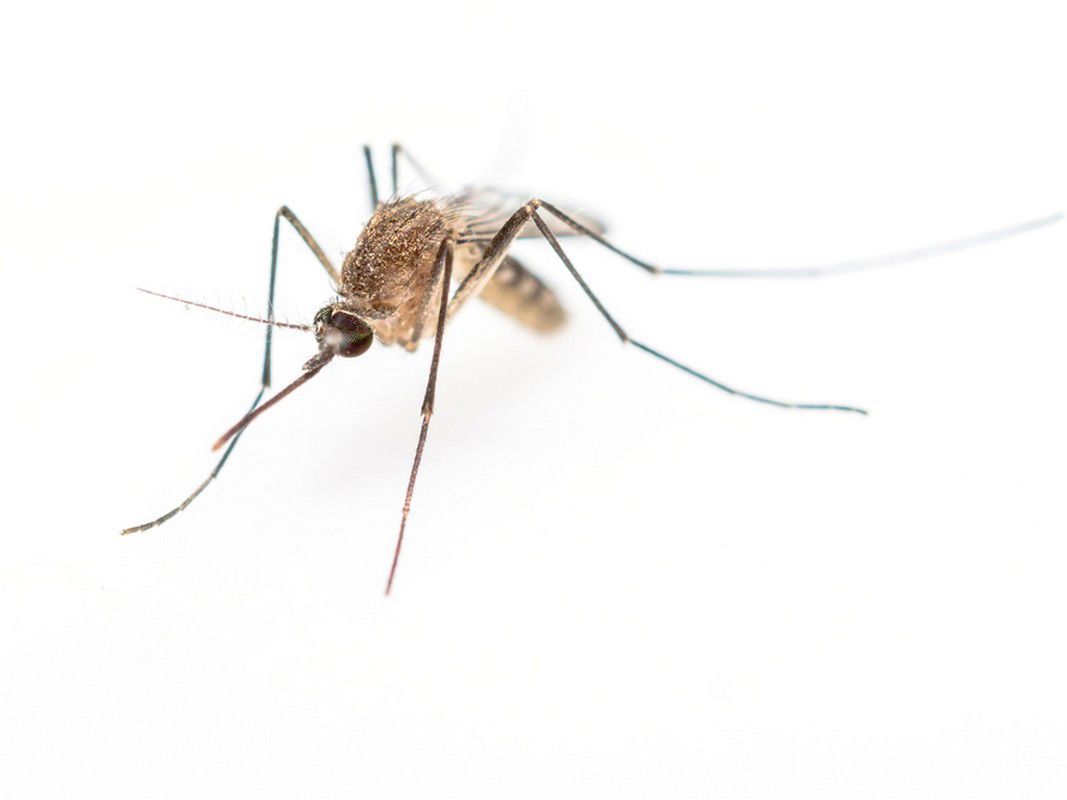
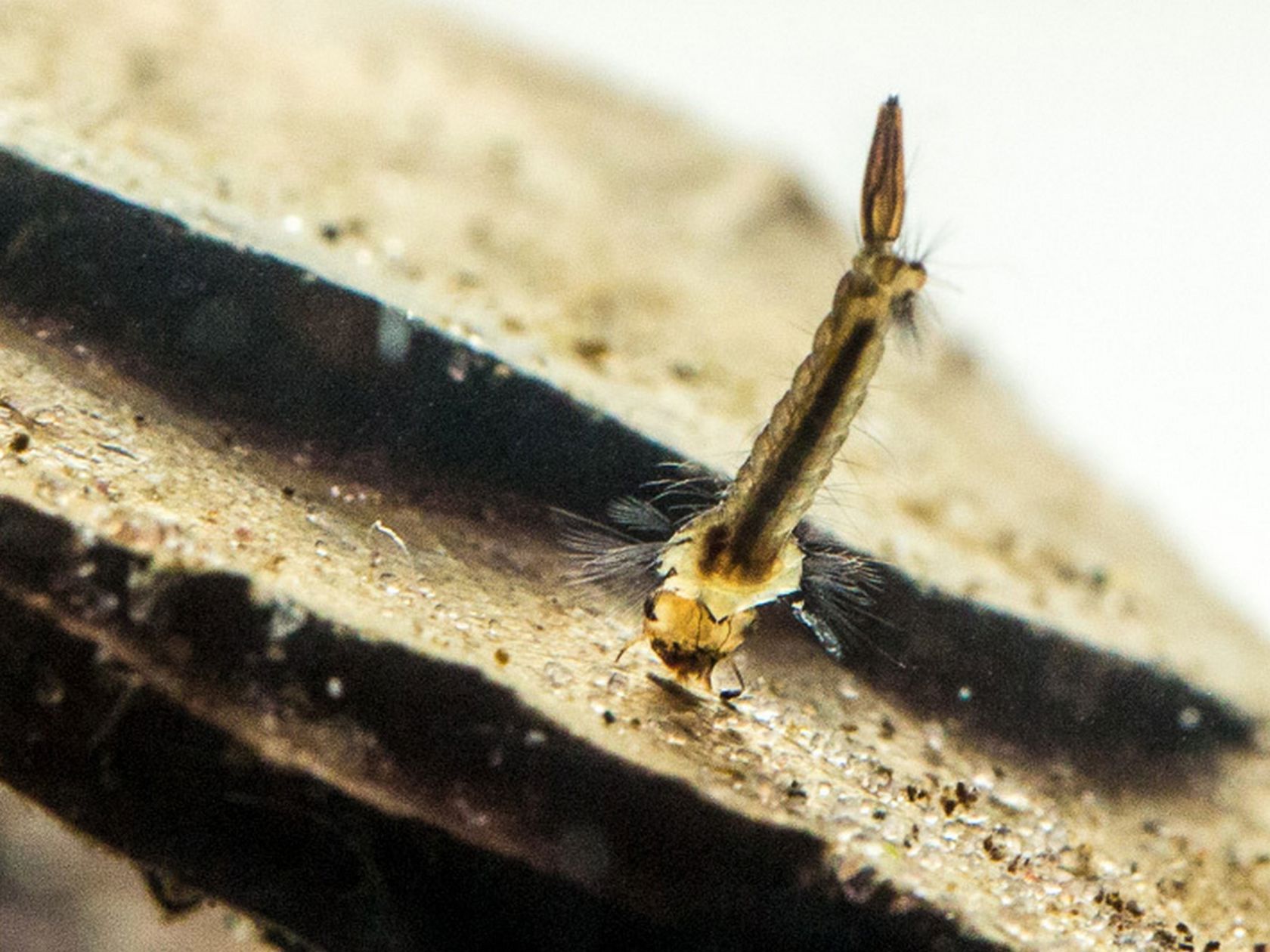
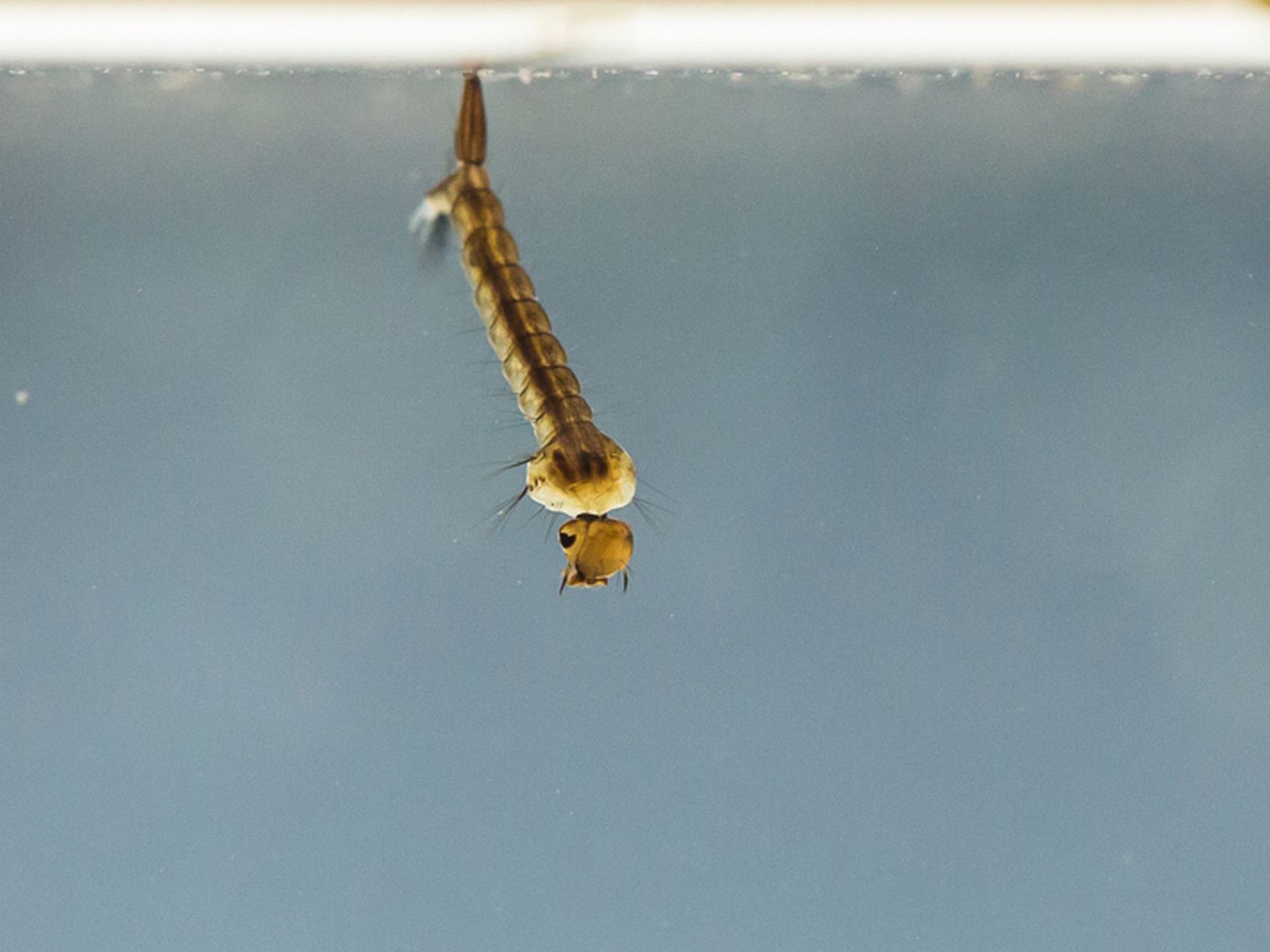
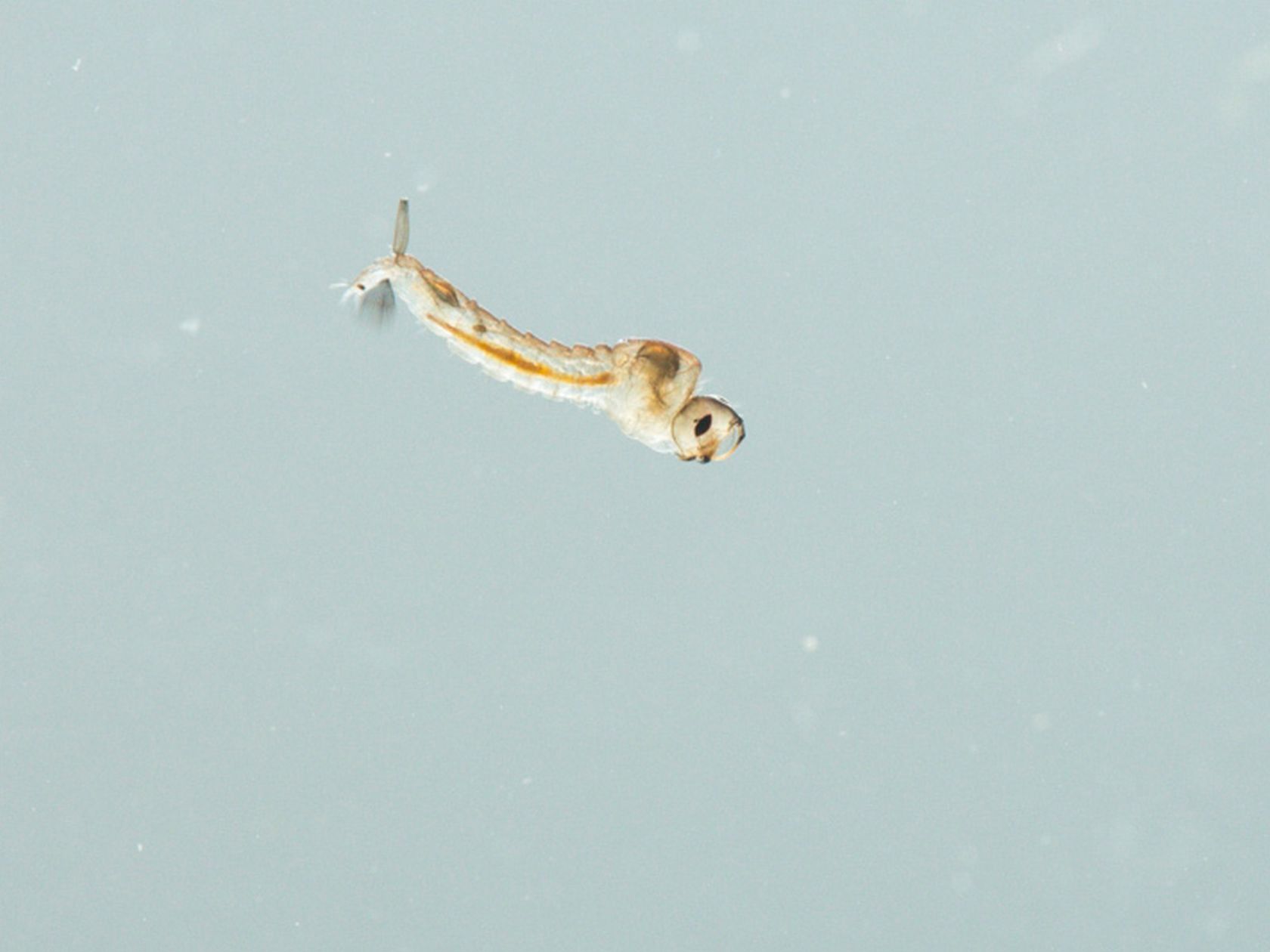

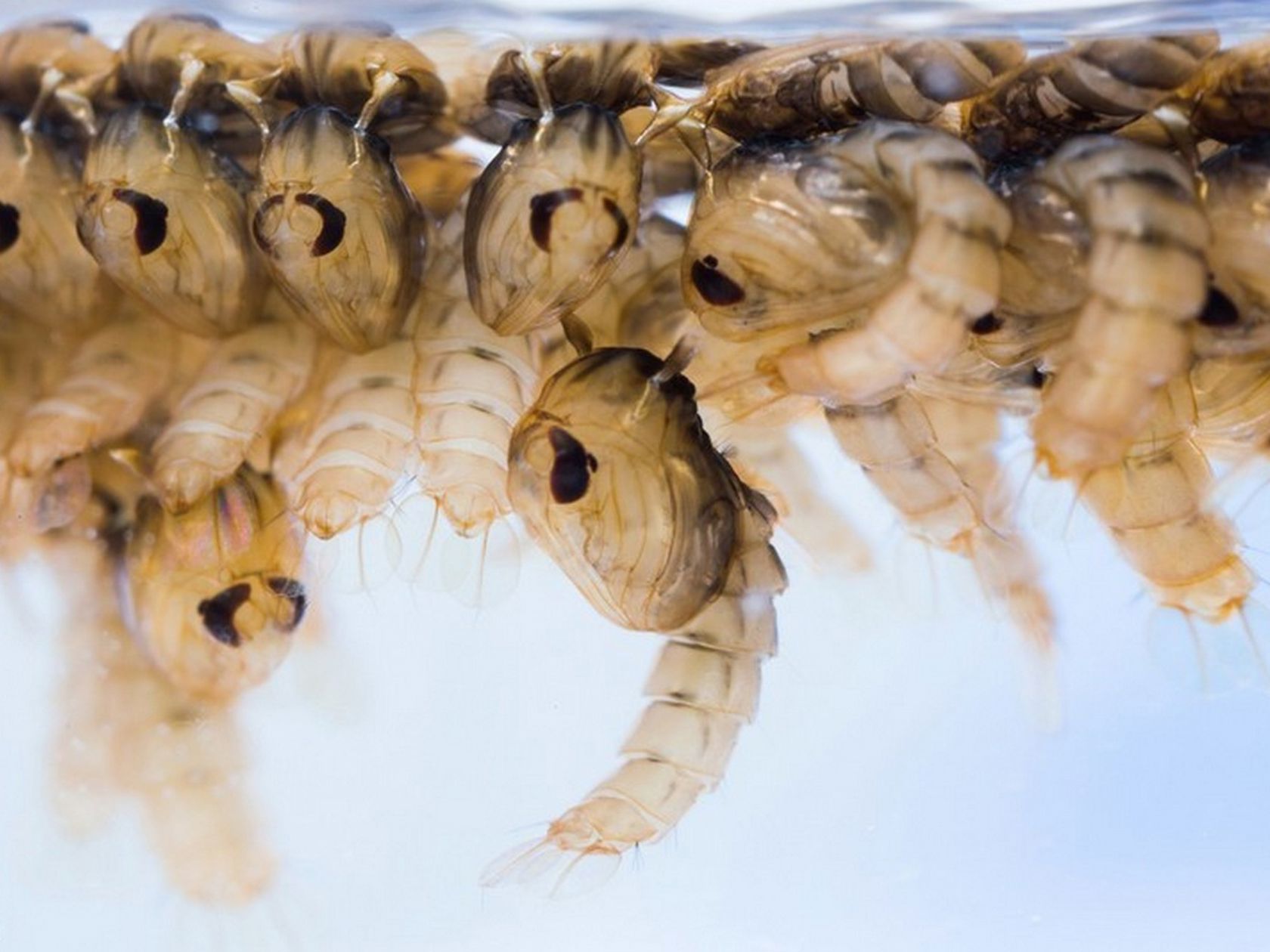
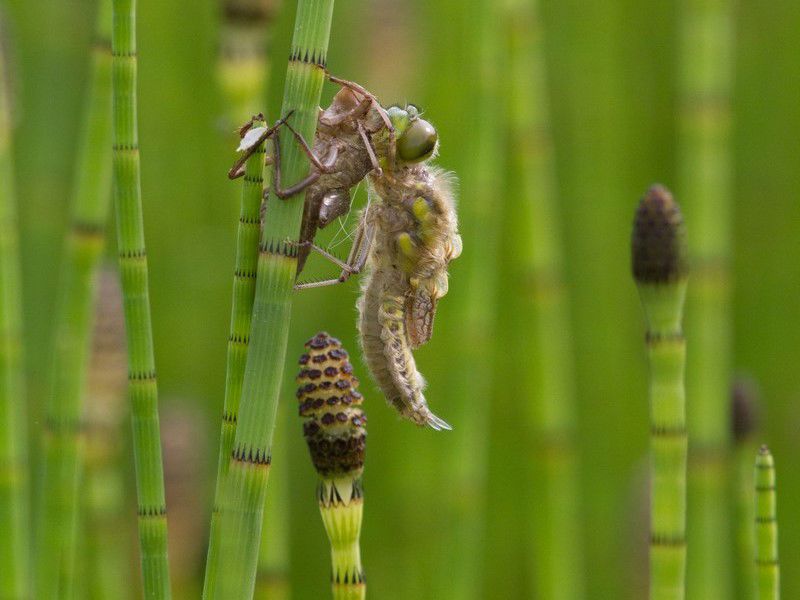
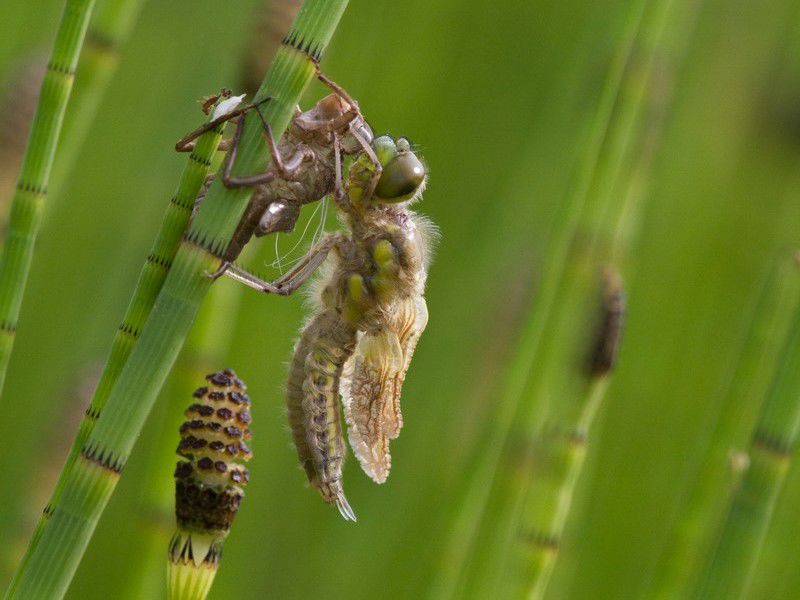
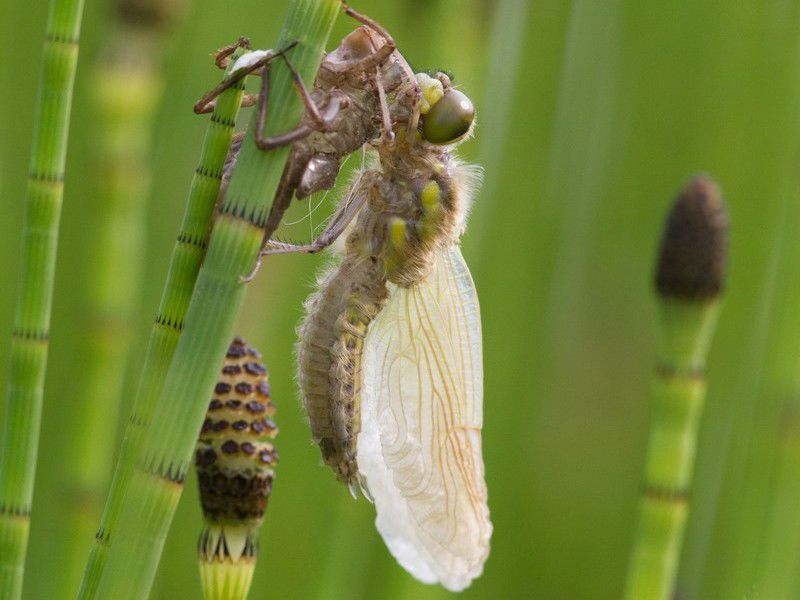
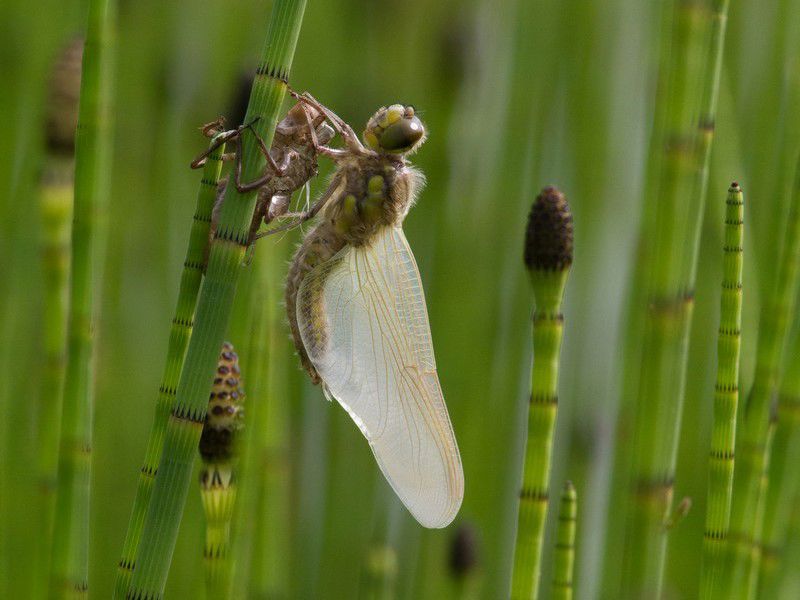
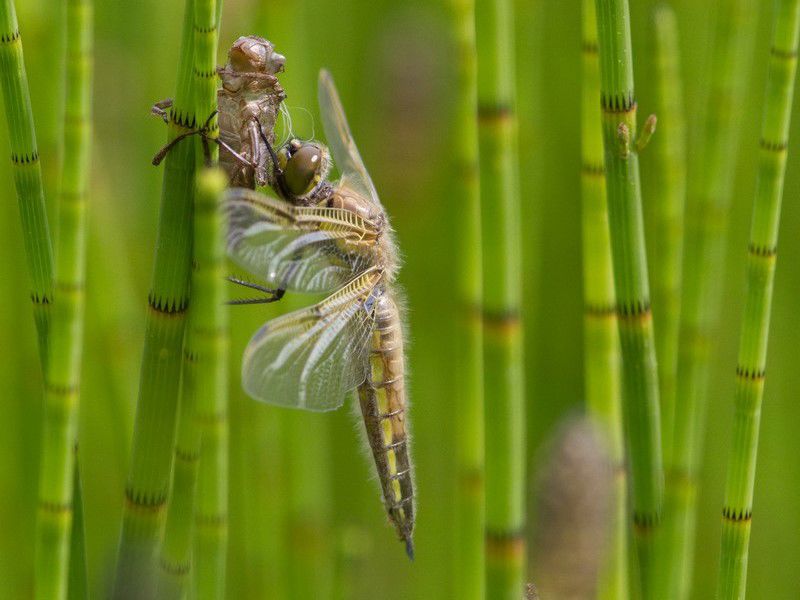
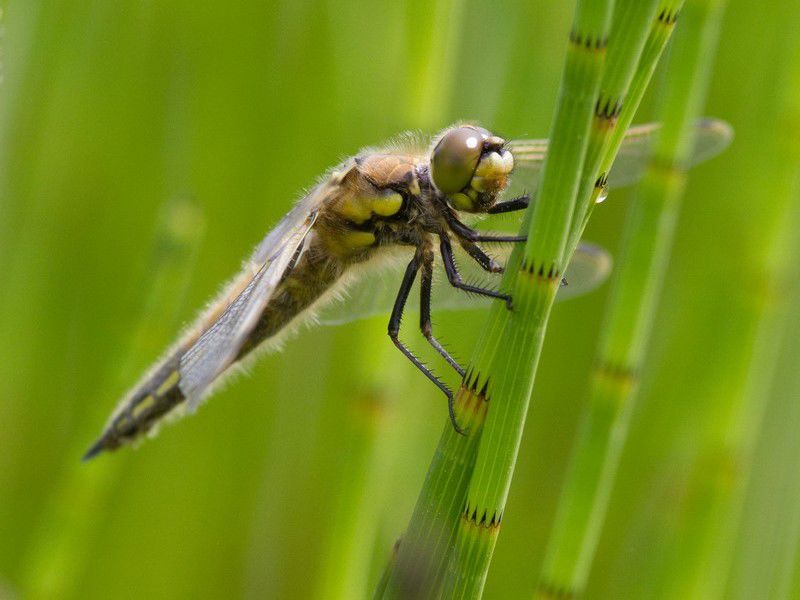
In summer, there is constant air traffic above our waters. Large insects fly around the water's surface and above it. They have four wings, a long narrow tail, a large thorax and enormous eyes. They fly skilfully, racing each other or engaging in fierce pursuit of smaller flying insects. These flying acrobats of the insect world are called dragonflies.
Dragonflies have a unique flying style. They can move each wing independently and even reverse flight if necessary. Small dragonflies mainly feed on mosquitoes and other small insects. Large dragonflies may even prey on other dragonflies.

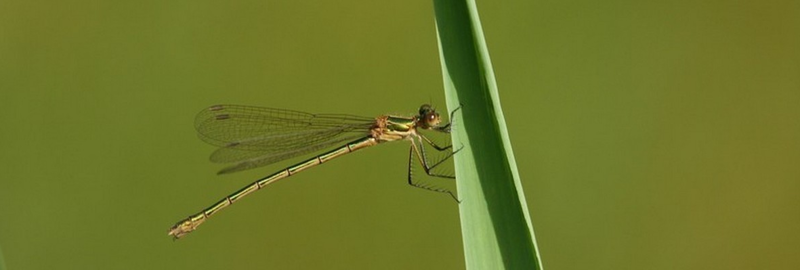
It is often claimed that dragonflies have a short lifespan. However, this is not true. Dragonflies are actually quite long-lived. The adult stage may only last a few weeks to a month, but dragonflies spend most of their lives as larvae. The larval stage can last up to two or three years. However, it usually lasts less than a year. As a rule of thumb, the larval stage lasts longer for larger species than for smaller ones.
Like adult dragonflies, the larvae of dragonflies are also predators. Dragonfly larvae can even hunt fish!
Worms are simple animals. They have no limbs, heads or brains. They also lack many kinds of important organs, such as eyes.
Because worms have soft bodies and no legs, they are an easy source of food for predators such as birds. Because of this, they have adapted to living in hidden places under the ground and in water.
Many phyla of the animal kingdom include worm-like species. The common earthworm belongs to the group of annelids. It is a decomposer that gains its energy by eating dead plant parts.
Many flatworm species live as parasites inside the bodies of animals such as fish.
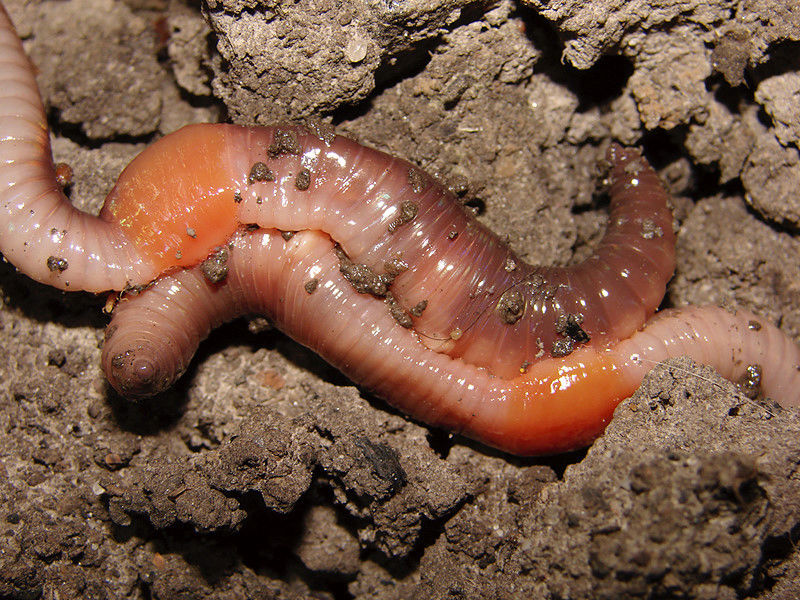
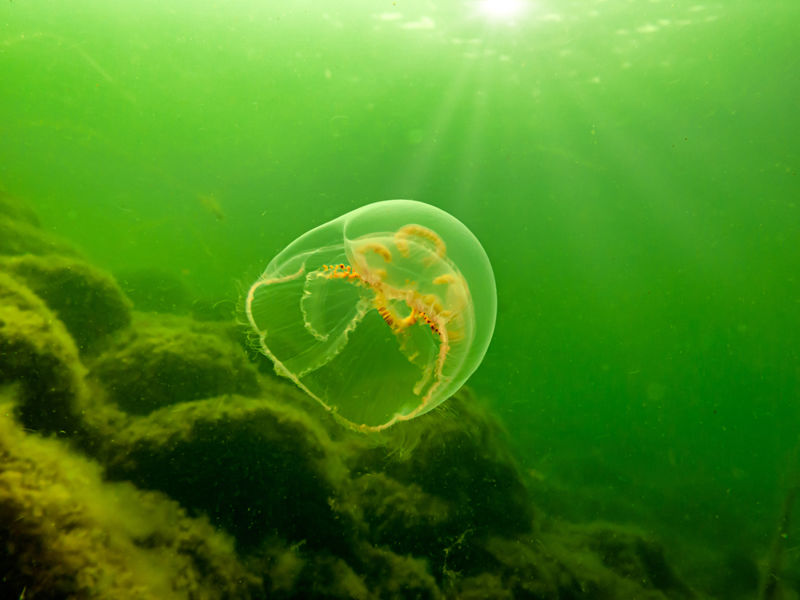
Jellyfish and coral belong to the group of cnidarians. Cnidarians are water-dwelling organisms that can mostly be found in warm saltwater ecosystems.
Most cnidarian species are radially symmetric and have simple structures. Cnidarians have a primitive nervous system, and they have no separate circulatory or digestive systems. Instead, cnidarians have a digestive channel, where food intake and waste removal are achieved through a single hole.
Snails, clams and octopuses are molluscs. Many mollusc species, such as snails and clams, are protected by calcite shells.
Most molluscs, such as snails, are mainly herbivores. Similarly, mussels eat by filtering organic matter from the water around them.
Octopuses, on the other hand, are highly evolved predators that eat fish and crustaceans, among other things.
Molluscs are common aquatic invertebrates. For example, blue mussels are a common species found in many seas and oceans.
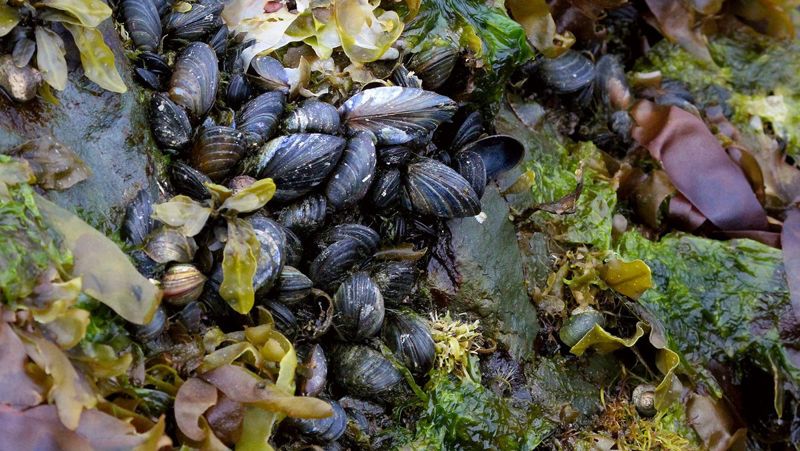
Mussels are found in many Finnish lakes and rivers.
Lake mussels live in stagnant or slow-flowing waters, such as eutrophic lakes and river pools. There are two species of lake mussels in Finland: the duck mussel and the swan mussel.
The mussel is protected by a calcareous shell, inside which the mantle of the mussel is found. The shell grows at its edges and takes on slightly different colours at different times of the year.
The mussel’s only means of defence is to close its shell using specialised muscles developed for this purpose. The gills and the internal cavity, which contains the heart, stomach, intestines, digestive glands and a primitive nervous system, are protected by the shell.
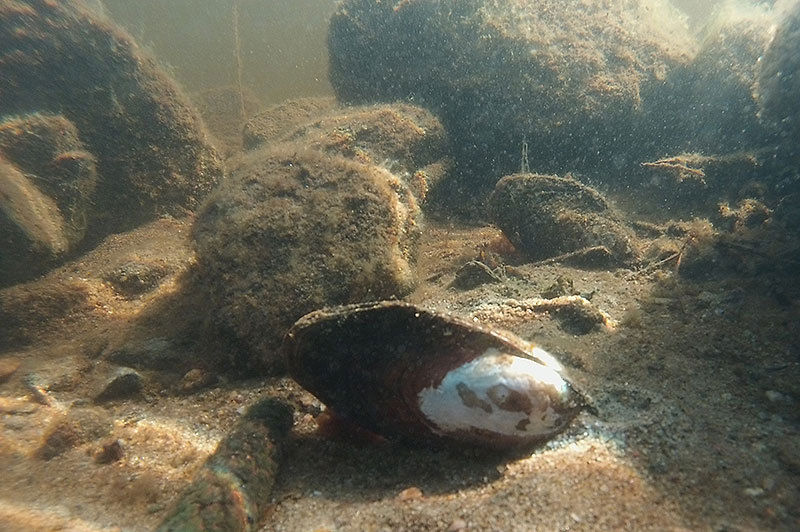
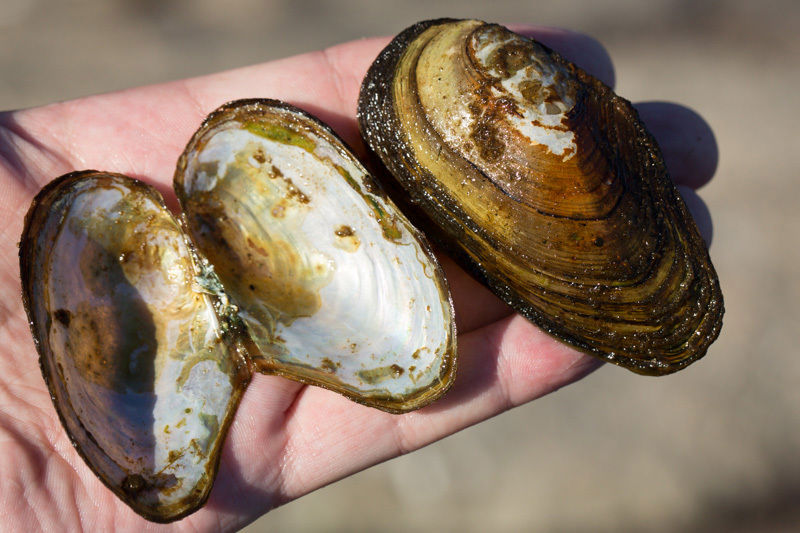
Lake mussels cling to the bottom of the water ecosystem in an upright position. They are half buried in the mud, with only their pointed rear end visible. The rear end has an opening through which the mussel collects water and nutrients.
The water flushes oxygen into the mussel’s gills. Waste is expelled through a waste opening at the other end of the mussel. The lower part of the body has a single foot, which the mussel uses to move.
Mussels spawn in late summer. The male releases his sperm into the water, where it travels to the female mussel and fertilises the egg cells located between the gills. The fertilised eggs develop into larvae, which the female releases into the water. The larvae attach themselves to the gills or skin of fish, where they remain for a few months. Later, they drop to the bottom of the water ecosystem and begin their independent life.
Mussels are very sensitive to water pollution and acidification, which makes them suitable for studying water quality. Mussels are also an important food source for many animal species. Many small mussels end up as food for fish, while otters and mink prefer to eat larger mussels.
The freshwater pearl mussel is found in clear, flowing water ecosystems. The freshwater pearl mussel can live for over one hundred years, making it the longest-lived animal in Finland. Its life cycle depends on the presence of salmonid fish, as the larvae can only parasite salmonids.
The freshwater pearl mussel is the only mussel species in Finland that can form pearls. The pearl forms around a grain of sand or other debris that has become lodged in the shell. The best pearls are regular in shape, light in colour and shiny. In nature, it can take up to 50 years for a single pea-sized pearl to develop. Such a valuable pearl can be found in only one out of a thousand shells collected. The largest pearl found in Finland has been almost 11 millimetres in diameter.
In the beginning of the 20th century, the freshwater pearl mussel was harvested by humans too intensely. This greatly diminished the Finnish population of the mussel. The freshwater pearl mussel received protected status in 1955, being the first protected invertebrate in Finland. Today, it is considered a critically endangered species both in Finland and globally. The freshwater pearl mussel can still be found in some areas of Lapland as well as southern and western Finland.
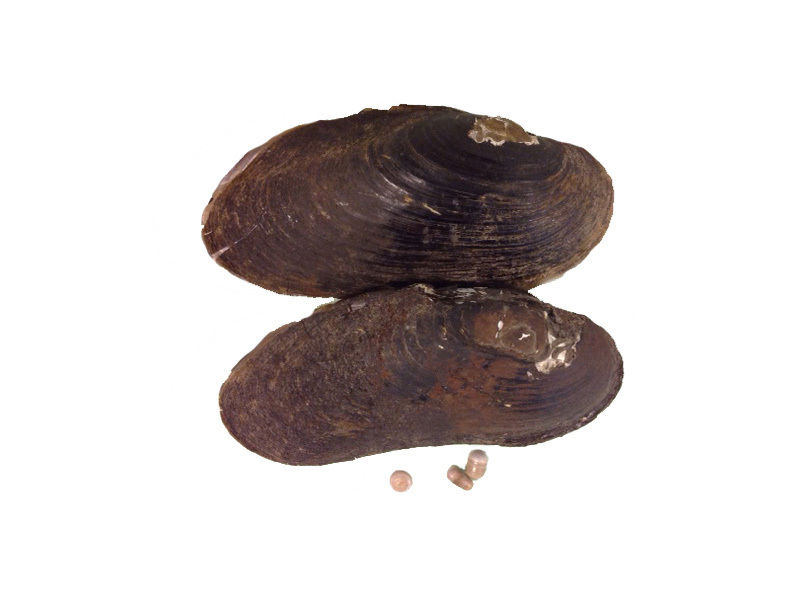
The blue mussel is a mollusc species that can be found in the Baltic Sea.
In the oceans, blue mussels grow very large, even exceeding ten centimetres in length. In the Baltic Sea, however, blue mussels remain much smaller. In the Baltic Sea, the salt content, winter conditions and ice cover limit the growth of mussels.

Like other mussels, blue mussels filter their food from the water. It is estimated that the blue mussels of the Baltic Sea filter the entire volume of the Baltic Sea every year. Blue mussels are an important source of food for many animals. In addition, blue mussel communities are important habitats for other species. The blue mussel is one of the keystone species of the Baltic Sea.
Blue mussels are often found attached to rocks or seaweeds. As their name suggests, their shells often have a hint of blue. However, their overall colour is dark brown.
Humans consider blue mussels to be a delicacy, often served in fancy restaurants. However, they are a much more important food source for birds. Eiders, for example, dive for blue mussels from the sea floor. For this reason, changes in the blue mussel population also affects the number of eiders. Blue mussels have been found to suffer from eutrophication and dredging in shore areas.
Crayfish, lobsters and crabs belong to the phylum of arthropods and the group of crustaceans. Like most arthropods, they are characterised by their jointed legs.
A crayfish's body consists of three parts: the head, the thorax and the abdomen. The head and the thorax form the front part of the crayfish’s body, which is covered by a continuous back shield. The back part of the crayfish's body consists of a jointed, flexible abdomen.
The bodies of crabs, lobsters and crayfish are covered by an exoskeleton that consists of calcium, chitin and protein granules. The colour of the exoskeleton varies between different species. The exoskeleton provides support and protection for the animal's internal organs. Muscles are also attached to the inner surface of the shell.
Crabs, lobsters and crayfish have paired legs, with the forelegs forming a pair of claws that the animal uses to hunt, to protect itself and to dig holes underground. Crabs, lobsters and crayfish breathe with gills.
Other aquatic crustaceans include smaller species such as shrimp and krill, and immobile species such as barnacles.
Spiders are arthropods that have eight legs. They belong to the group of arachnids.
Spiders are predators. Some spider species build webs to catch insects, whereas other species run after their prey.
All spiders are capable of biting, and some of them use venom to paralyse their prey. Many spider species are capable of diving and living underwater for small periods of time.
The diving bell spider is the only spider species known to live almost entirely underwater. Because arachnids do not have gills, the diving bell spider must create a bubble of air in its underwater nest. It does so by collecting small bubbles of air with the small hairs of its body and bringing them to its nest.

Insects are the largest group of animals in the world. They are found almost everywhere. They are particularly abundant in environments where there is enough warmth and moisture, such as rainforests.
All insects share the following traits:
The most common groups of insects include:


a) The common housefly is a species of butterfly.
b) Butterflies are arthropods.
c) Snails are arthropods.
d) Dragonflies are butterflies.
e) Worms have no skeletons.
f) A grasshopper is an insect.

Mitä haluat tehdä tekstillä? Teksti käsitellään tekälyn avulla, eikä sitä sen jälkeen muokata tai tarkisteta. Tekstissä voi esiintyä virheitä. Tarkista tekstin oikeellisuus vertaamalla sitä kirjan alkuperäistekstiin.
Valitse tiedostot, jotka haluat lisätä. Tuetut formaatit ovat txt, html, htm, pdf, odt, odp, ods, xls, xlsx, ppt, pptx, pps, doc, docx, rtf, png, jpg, jpeg ja gif.
| Nimi | |
|---|---|
| poista |
Huom.! Linkkien tulee alkaa ”http://”!
Opiq käyttää verkkosivun toiminnan, turvallisen käytön varmistamisen, käytön analysoimisen ja parhaan käyttömukavuuden tarjoamisen edellyttämiä evästeitä.
Eväste on käyttäjän tietokoneelta verkkosivun palvelimeen lähetettävä pieni tiedosto, joka sisältää verkkosivun toiminnan edellyttämiä käyttäjää ja hänen tekemiä valintoja koskevia tietoja.
Isoin osa evästeistä ovat Opiqin toiminnan kannalta välttämättömiä. Analyyttisistä evästeistä voi luopua ja silloin ei sinun käyttötietojasi ei käytetä Opiqin kehittämiseen. Lue lisää